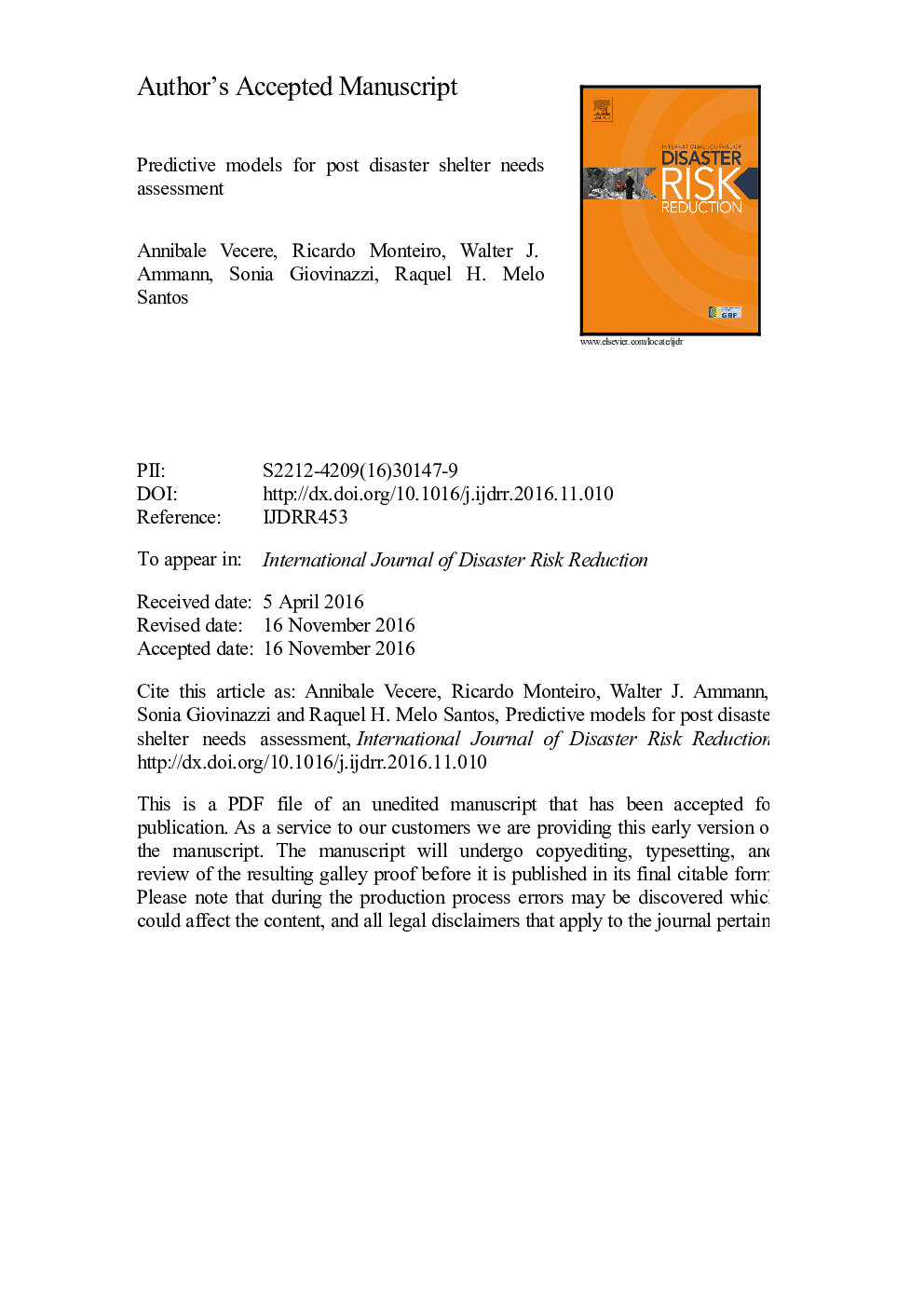| Article ID | Journal | Published Year | Pages | File Type |
|---|---|---|---|---|
| 5116162 | International Journal of Disaster Risk Reduction | 2017 | 49 Pages |
Abstract
The assessment of shelter needs of displaced people in the aftermath of major earthquake events is one the main challenges that emergency responders currently have to face. Based on the scale of the disaster, the short-term shelter demand can turn into a temporary housing need for displaced population, which is a local government responsibility. The study presented in this paper is focused on a critical review of currently available methodologies and corresponding software packages that were developed specifically for estimating the number of displaced people and those who will most likely seek public sheltering and will need temporary housing. The main features and shortcomings of such tools are highlighted and interpreted with a view to future improvement and application in the disaster management field. Two software tools, ERGO-EQ and HAZUS-MH, have been identified as more exhaustive in considering all the different variables involved in the shelter needs estimation. For this reason, this study also includes a full application of those two software tools to a real case study. Specifically, the modelling of the February 22nd, 2011 Christchurch earthquake is presented, in which hazard, vulnerability and exposure (both physical and social) were characterized over a specific area of Christchurch urban area as input to the aforementioned software tools. The employed tools yielded different results in terms of dislocated people and shelter needs estimates, for which a brief discussion is presented on possible ways to improve and to better reflect the local conditions, in order to produce more realistic outputs.
Keywords
Related Topics
Physical Sciences and Engineering
Earth and Planetary Sciences
Geophysics
Authors
Annibale Vecere, Ricardo Monteiro, Walter J. Ammann, Sonia Giovinazzi, Raquel H. Melo Santos,
